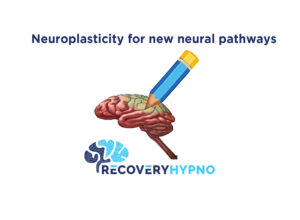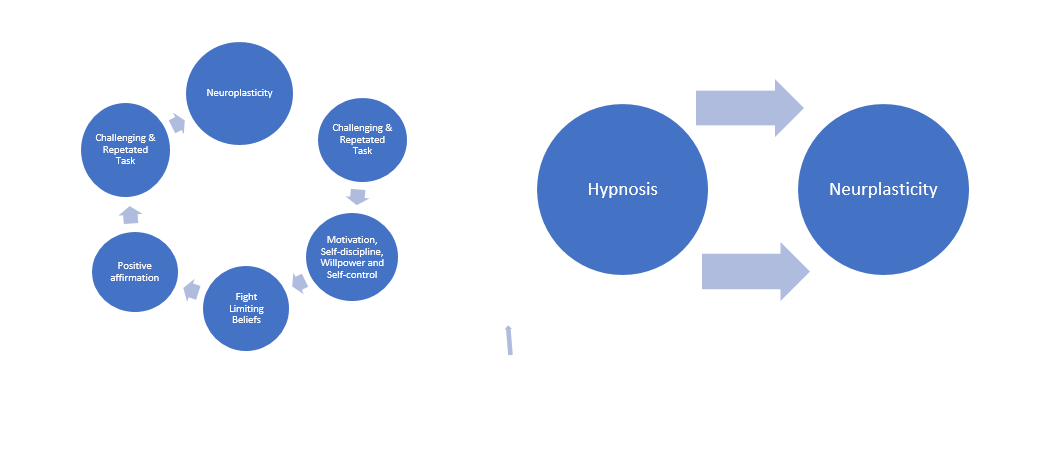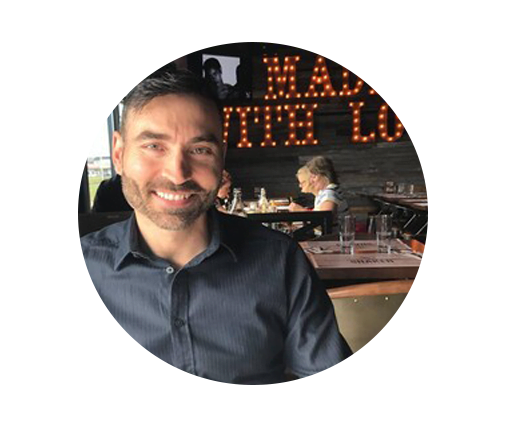Hypnosis – The fastest and easiest way to create neuroplasticity and change behavior
What is neuroplasticity?

Neuroplasticity is also known as brain plasticity. It means that the brain is always changing by forming new neural pathways (multi-neuronal networks composed of neurons connected by dendrites) in response to interactions with our environment. Those neural pathways are created in the brain based on our habits and behaviours. However, neuroplasticity is all about tracing new paths and connecting them together.
Neuroplasticity is not as easy as we thought it was.
Unfortunately, the fundamental process of neuroplasticity is not so easy, in fact, it’s really hard. Two things happen in the brain to create neuroplasticity. The first one is to do a challenging task for the brain, and the second is to be committed repeatedly. To help you better understand this concept: Imagine that the brain is a snowfield or a sand field. Tracing or finding a new path in the snow or in the sand requires a lot of effort as it’s unpleasant and uncomfortable. People are more inclined to choose the pathway that was already drawn by others because it’s easier compared to create a new one. But, the more consistent we are, the more we can walk easier and faster in the new tracks. As the psychologist Dean Ware explains: “the messages that travel the same pathway in the brain over and over begin to transmit faster and faster”. Also, the psychologist Donald O. Hebb said: “Neurons that fire together wire together”. 2
Change is one of the most difficult things for people. My master’s thesis 3 showed that of the five biggest obstacles to achieve organizational goals, the main one is to take action and to get out of the comfort zone. For most people, taking action or to start doing something is quite challenging and difficult. However, for others the hard part is to finish what they already started.
The two best activities to provide neuroplasticity
The two best activities for most people to provide neuroplasticity are: learning a new language and a musical instrument. In my field of expertise, the fact of recovering from addiction is a highly challenging activity and need some repetition. That is an example of neuroplasticity as well.
As Vascular neurologist Dr. Oana Dumitrascu said: “Challenging your brain to learn something new—such as a foreign language or a musical instrument—has been shown, both in healthy individuals and patients dealing with mild cognitive impairment, to improve brain structures and neuroplasticity” 4.
Does Sudoku and crossword puzzles provide neuroplasticity?
Regarding the difficulty of the task, many people tend to believe that Sudoku and crossword puzzles can produce neuroplasticity. These brain exercises can keep brain cells active and healthy, but do they actually provide neuroplasticity? Contrary to popular beliefs, solving Sudoku puzzles and crossword puzzles don’t provide neuroplasticity 5. According to Dr. Oana Dumitrascu, to keep the brain healthy is more complex than simply doing daily puzzles: “Repetitive activities and staying in your comfort zone will not improve your neuroplasticity” 6. A study was published in Psychological Science in 2013 7 on people aged between 60 and 90 who practiced new and complex activities, such as quilting or digital photography, for an average of 16.51 hour per week for three months. This study revealed that those test subjects scored better on long-term memory tests than the control group who did more familiar activities like reading or doing crossword puzzles.
The most relevant study related to this subject is the one published in the British Medical Journal that looked at 498 people born in 1936 who took part in an integrity test at the age of 11. Then they tested again the same people from the age of 64, over a period of 15 years, for speed and verbal processing information. It was observed that solving Sudoku and crossword puzzles might not influence trajectories of cognitive decline 8.
If you want to keep your brain “plastic”, as Tara Swart, neuroscientist, says: “the new challenges that push you to mental and physical exhaustion forces your brain to change the ways it works. This is the way in which new neurons are grown and strengthened to connect with existing neurons, forming new pathways” 9 . Dr. Oana Dumitrascu goes in the same direction by mentioning “You need to challenge yourself every day’’.
Furthermore, at the adult age, we have so many existing neuro networks that it is difficult for the brain to let go of all these networks for a new one. Like I said earlier, people are more inclined to take the same path in the snowfield already drawn because it’s easier.
The biggest difficulty to create neuroplasticity is repetition
So, now let’s talk about repetition, the second condition for creating neuroplasticity. According to Tara Swart, “depending on the complexity of the activity, four and a half months, 144 days or even three months for a new brain map is equal in complexity to an old one that should be created in the motor cortex.” 10. The enormous difficulty is repetition through time because motivation, self-discipline, willpower and self-control are required to achieve that complex activity. During this time, your current beliefs can hinder progress. If you want to learn a new language, musical instrument or stop using drugs, but you have the beliefs that you are not good enough or that it is too difficult for you, then surely it will not happen. Even if you consciously want to do it but you have the limited beliefs unconsciously, your brain will quickly start an internal war for the period needed to create the new brain map.
This reminds me of a story told by Alexander Nadeau, a human transformation expert, with whom I participated in many of his personal development seminars. Once a upon a time, he asked to the 1500 people present at one of his seminars: Who here have used the law of attraction and it worked? Then more than half of the crowd raised their hands.
After that, he asked them: Who of you used the law of attraction for something other than to find a parking space? This time, only 5 to 7 hands stood up among the 1500 people there.
This funny story revealed two things: firstly, Accomplishing a complex goal is really difficult for most people and secondly, even if someone spend 15 minutes a day to attract something, but for the rest of the day the inner self says otherwise, guess who will win the internal war at the end.
Positive affirmations to convince the inner self
Some people use positive affirmations to help them change their limiting beliefs to get “free” from their psychological obstacles. The concept is to repeat the positive affirmation until the inner self is convinced that it’s true. It’s the process to go from the conscious to the subconscious level that is difficult to achieve. The problem with positive affirmation is that it operates at the conscious level instead of the subconscious level where the limiting beliefs really are. Similarly, Bruce H. Lipton said with humor in his audiobook ‘‘The biology of belief’’: It is useless to speak to the subconscious because there is no one in it. It is a device that is constantly on play that only diffuses our behaviors and habits 11. Most of the time, the subconscious may likely remind of the many times the person was not good enough for the positive affirmation “I’m successful…” Again, this process requires motivation, self-discipline, willpower, and self-control for five months, many times a day, to beat the critical factor which is the voice who says “No it is not true”…
Besides, positive affirmations might not be for everyone. Indeed, research in the Journal of Psychological Science concluded that “repeating positive self-statements may benefit certain people, such as individuals with high self-esteem, but it acts like a backfire for those people who need them the most.”12.
Hypnosis, the fastest and easiest tool for real neuroplasticity
Now, you must be saying to yourself that it would be great to not have to be challenged by limiting beliefs, critical factors, inner self and to be able to go directly to the subconscious level to make the necessary changes. Unfortunately, nothing exists similar to this that goes instantly to the subconscious level, as in The Matrix movie, and install a new program in a few seconds. However, the fastest and easiest tool that I know to help someone change their brain network is hypnosis. I don’t know any other way as fast as hypnosis to “shut down” the consciousness to have access directly to the subconscious level. And at the same time, it needs not as much motivation, self-discipline, willpower and self-control to procure neuroplasticity.
The American Psychological Association (APA) calls hypnosis a “therapeutic technique.” Hypnotherapists use the hypnosis techniques to relax the conscious mind to be able to have access to the subconscious mind in order to work directly with the subconscious to: introduce the suggestions that the person wants to develop, change or decrease thoughts, limiting beliefs or behaviors. In other words, with hypnosis, anyone can change their brain network without having this inner war and constantly use motivation, self-discipline, willpower, and self-control every day, for months and even years.
Several studies demonstrated that plastic changes in neuronal activity happen after a hypnosis session 13-18 . The study of Halsband 19 also showed that the neuroplasticity in the brain for hypnosis use functional magnetic resonance imaging (fMRI), positron emission tomography (PET), and electroencephalography (EEG) to measure three different frequencies bands: theta, alpha, gamma (Figure 1).
Figure 1:

The color maps (figure 2) shows significant increases in all three frequencies bands: “In the theta band (t > 10.0, p < 0.001) a strong global increase was measured with a special emphasis on sensory-motor areas bilaterally. In the alpha band, the increases were less pronounced (t > 3, p < 0.002 over sensory-motor areas) but significant – again with a higher activation rate is observed bilaterally in sensory-motor areas. In addition, within the gamma band, strongest activations were recorded in parietal, central, and frontal brain regions”. These results are in agreement with those obtained in the research of Katayama et al. 20.
Figure 2:

Also, Halsband 19 did his study by comparing hypnosis with Tibetan Buddhist meditation. The results were that they both demonstrated neuroplasticity with these particularities in the frequencies bands: “High amplitudes in alpha frequency bands were most pronounced with meditation at frontal positions and with hypnosis in central and temporal locations. In the same way, greater activity was observed in theta 2 band only with hypnosis in both hemispheres”.
I practice meditation every morning in my “Miracle Morning” program 21 and I love it. Even so, every single day you need motivation, self-discipline, willpower, self-control and find time in order to really practice meditation. This practice is not easy for most people. I have a lot of clients and friends who have difficulty keeping the concentration needed to stay in the present moment and to get rid of random thoughts. Halsband 19 says: “it is independent from requiring the social relationships that play a key role in meditation exercises”. While hypnosis depends on the hypnotherapist relationship and their suggestions.
In summary, to create neuroplasticity, the task has to be challenging and repeated several times over days and weeks. The person must have the motivation, self-discipline, willpower, and self-control to achieve this and stay consistent over time. Moreover, one must fight his limiting beliefs and fears during this time of change. To help, positive affirmations are used by many people. However, as we have already seen, most of the time it will not work. But, creating “inner wars” may work for some people but it’s not perfect for those who need it the most. The other option is to go see a certified hypnotherapist a few times. With hypnosis, the brain network will be modified by going directly to the subconscious.
The goal is not to find an easy, effortless method, but to help those who find it really difficult to challenge their conscious mind, beliefs and discipline. Often, those people give up before they could have the benefits of it.
Here is a diagram comparing the different ways to achieve neuroplasticity (Figure 3).
Figure 3:

Sources:
1- The Lancet Neurology
2- Hebb, D. O. (1949). ⦁ The Organization of Behavior: A Neuropsychological Theory. New York: Wiley and Sons. ⦁ ISBN ⦁ 9780471367277.
3- Luis Lopes (2010) «Étude exploratoire portant sur les obstacles aux objectifs organisationnels dans le management public » Thesis. Montréal (Québec, Canada), University of Québec at Montréal, Master Business Administration.
4- Kyle Beswick (2019) Do Brain Games Help Brain Health? ⦁ Cedars-Sinai
5- Tara Swart (2018) “The-4-underlying-principles-to-changing-your-brain” ⦁ Forbes
6- Kyle Beswick (2019) Do Brain Games Help Brain Health? ⦁ Cedars-Sinai
7- Denise C. Park & al. (2013) “The Impact of Sustained Engagement on Cognitive Function in Older Adults: The Synapse Project” ⦁ Psychological Science.
8- Roger T Staff, Michael J Hogan, Daniel S Williams, L J Whalley (2018) “Intellectual engagement and cognitive ability in later life (the “use it or lose it” conjecture): longitudinal, prospective study” ⦁ British Medical Journal.
9- Tara Swart (2020) “Creating new neural pathways in the brain” ⦁ The Alternative Daily
10- Tara Swart & al. (2015) “Neuroscience for Leadership: Harnessing the Brain Gain Advantage (The Neuroscience of Business)”
11- Bruce H. Liption (2005) “The Biology of Belief”.
12- Joanne V. Wood & al. (2009) “Positive self-statements: power for some, peril for others” ⦁ Psychological Science.
13- Halsband (2006) “Learning in trance: functional brain imaging studies and neuropsychology”. Journal of Physiology (Paris) 99 4–6: 470–82.
14- Halsband U (2004) “Mechanismen des Lernens in Trance: funktionelle Bildgebung und Neuropsychologie”. Hypnose und Kognition 21: 11–38.
15- Egner T, Jamieson G, Gruzelier J (2005) “Hypnosis decouples cognitive control from confl ict monitoring processes of the frontal lobe”. NeuroImage 27: 969–78.
16- Spiegel D, Kosslyn SM (2004) “Glauben ist Sehen: Die Neurophysiologie der Hypnose. Hypnose und Kognition” 21(1–2): 119–37.
17- Kosslyn SM, Thompson WL, Costantini–Ferrando MF, Alpert NM, Spiegel D (2000) “Hypnotic visual illusion alters color processing in the brain”. American Journal of Psychiatry 157(8): 1279–84.
18- Faymonville ME, Laureys S, Degueldre C, DelFiore G, Luxen A, Franck G, Lamy M, Maquet P (2000) “Neural mechanisms of antinociceptive effects of hypnosis”. Anesthesiology 92: 1257–67.
19- Halsband U, Susanne M, Hinterberger T, Strickner S (2009) “Plasticity changes in the brain in hypnosis and meditation”. British Society of Experimental and Clinical Hypnosis.
20- Katayama H, Gianotti LR, Isotani T, Faber PL, Sasada K, Kinoshita T, Lehmann D (2007) “Classes of multichannel EEG microstates in light and deep hypnotic conditions”. Brain Topography 20(1): 7–14.
21- Hal Elrod, “The Miracle Morning” ⦁ Hal Elrod’s Keynote Speech (2020): “The Miracle Morning”

Luis Lopes
I am a hypnotherapist certified by the National Guild of Hypnotists specialized in addiction relapse prevention and chronic pain. What always fascinated me is the ability for human beings to change, because changing and implementing permanent change is the most difficult thing for people to accomplish. My master thesis demonstrated that among the 5 obstacles for achieving objectives, the greatest was to take action. If you want to change something in your life and be happier, contact me to help you discover the permanent path to change.
